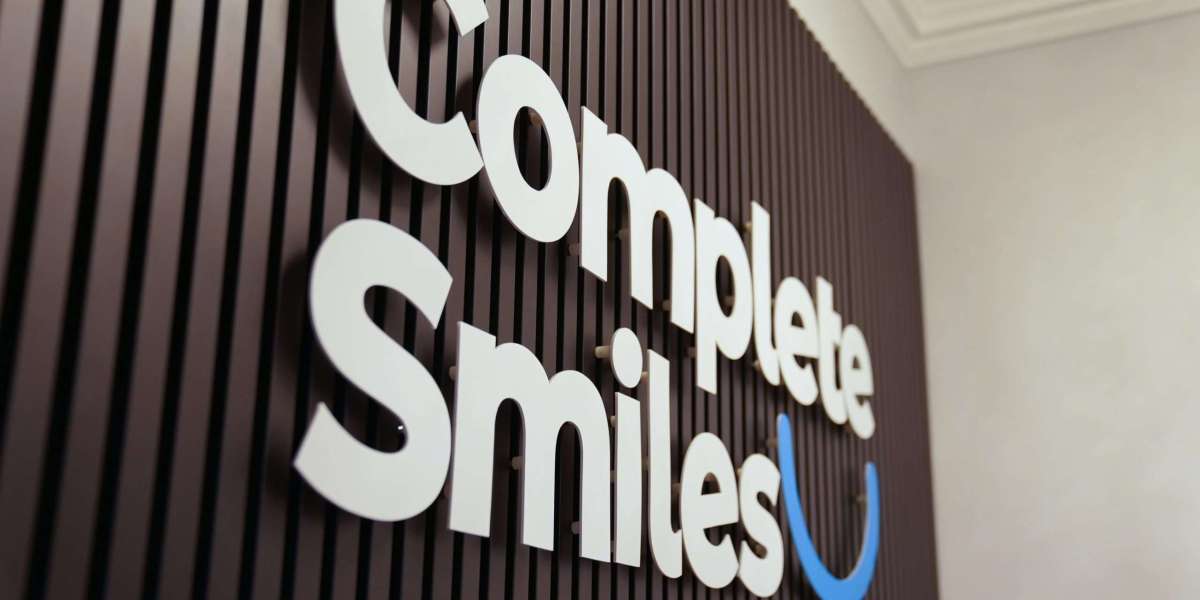Dental clinics are no longer just spaces for treatment—they have evolved into modern, patient-centric environments that enhance comfort, efficiency, and branding. The design of a dental clinic plays a crucial role in patient experience, staff productivity, and overall business success. As dental refurbishment companies continue to introduce innovative solutions, clinics are shifting towards technology-driven, sustainable, and aesthetically pleasing designs that reflect the latest industry trends.
For dental practitioners looking to refurbish their space or open a new practice, staying ahead of modern dental clinic design trends is essential. A well-designed clinic not only improves workflow and patient satisfaction but also enhances brand identity and marketing appeal. This blog explores the latest trends shaping dental clinic design, ensuring that dental practices remain functional, compliant, and visually appealing in today’s competitive market.
Patient-Centred Design for Comfort and Well-Being
One of the most significant trends in modern dental clinic design is the shift towards patient-centric spaces that reduce anxiety and create a welcoming atmosphere. Traditionally, dental clinics have been associated with clinical, sterile environments, which can heighten patient stress. However, contemporary designs focus on warm, inviting interiors that enhance relaxation and trust.
Key elements of patient-centred design include calming colour schemes, soft lighting, and ergonomic furniture. Many clinics are now integrating spa-like features, such as aromatherapy, soothing music, and natural elements like indoor plants and wooden textures. These elements create a less intimidating environment, making dental visits more comfortable for patients, especially those with dental phobia.
Additionally, clinics are adopting open, spacious layouts with separate zones for consultation, treatment, and recovery to ensure seamless patient flow and privacy. The goal is to create an experience that is as stress-free as possible, fostering long-term patient loyalty and positive word-of-mouth referrals.
Seamless Integration of Technology
Technology is transforming modern dental clinic design, making practices more efficient and digitally advanced. Dental refurbishment companies incorporate cutting-edge technology into clinic layouts to enhance patient experience and operational workflows.
Some of the most notable technological integrations include:
- Digital Check-In Systems: Self-service kiosks and mobile apps allow patients to check in without waiting in long queues, reducing congestion at reception.
- Paperless Documentation: Clinics are moving towards electronic health records (EHRs), minimising paperwork and improving accessibility for both patients and staff.
- AI-Powered Diagnostic Tools: The use of AI-driven imaging and diagnostic software is revolutionising dental consultations, ensuring faster and more precise assessments.
- Virtual Consultation Rooms: Tele-dentistry is becoming a staple in modern dental clinic design, allowing practitioners to offer remote consultations and follow-ups.
- Smart Lighting and Temperature Control: Automated lighting and climate control systems create a comfortable environment while enhancing energy efficiency.
By integrating these digital advancements, dental practices can streamline operations, improve patient engagement, and create a tech-savvy brand image.
Biophilic and Nature-Inspired Design
Another emerging trend in dental clinic design is the biophilic approach, which incorporates natural elements to create a soothing, stress-free environment. Research shows that nature-inspired interiors can significantly reduce anxiety and improve patient satisfaction.
Elements of biophilic design include:
- Natural Light: Large windows and skylights allow maximum natural light, reducing dependence on artificial lighting while creating a brighter, more welcoming space.
- Indoor Greenery: The addition of plants, green walls, or natural wood textures enhances the overall ambience and promotes a sense of calm.
- Nature-Inspired Colour Palettes: Soft blues, greens, and earth tones replace clinical white walls, making the space feel warmer and more inviting.
By incorporating biophilic design principles, dental clinics can create an environment that promotes both physical and mental well-being, leading to a more pleasant experience for patients and staff alike.
Sustainable and Eco-Friendly Dental Clinics
With growing awareness of environmental impact, sustainability has become a top priority in modern dental clinic design. Many dental refurbishment companies now focus on energy-efficient, eco-friendly solutions that reduce waste and lower carbon footprints.
Sustainable design features include:
- Energy-Efficient Lighting and HVAC Systems: LED lighting and smart temperature control reduce energy consumption while maintaining optimal comfort levels.
- Eco-Friendly Building Materials: The use of recyclable, non-toxic materials in flooring, cabinetry, and furniture enhances indoor air quality and reduces environmental impact.
- Water-Saving Dental Equipment: Modern dental chairs and sterilisation units are designed to minimise water wastage, making them more environmentally responsible.
- Solar Panels and Green Energy Solutions: Some clinics are investing in solar power to reduce dependency on traditional electricity sources.
By embracing sustainable practices, dental clinics can reduce operational costs, attract eco-conscious patients, and contribute to a greener future.
Flexible and Modular Clinic Layouts
A significant trend in dental clinic refurbishment is the adoption of flexible, modular layouts that allow for future adaptability. As technology and treatment methods evolve, clinics need designs that can be easily modified or expanded without extensive renovations.
Modular design elements include:
- Multi-Functional Treatment Rooms: Spaces that can be reconfigured for different procedures, accommodating both general dentistry and specialised treatments.
- Movable Partition Walls: These allow customisation of space based on patient flow and staff requirements.
- Adaptable Reception Areas: Reception spaces are now designed with mobile check-in stations and flexible seating arrangements to accommodate changing patient volumes.
A modular approach ensures that dental clinics remain future-proof, allowing them to grow and evolve without major disruptions.
Enhanced Focus on Branding and Aesthetics
Dental clinics are increasingly focusing on branding through interior design to create a distinct identity and improve patient recall. A well-branded clinic enhances trust, professionalism, and credibility, making it a powerful marketing tool.
Key branding elements include:
- Consistent Colour Schemes: Aligning clinic interiors with brand colours to reinforce identity.
- Custom Signage and Graphics: High-quality logo displays, wall graphics, and digital screens help strengthen brand recognition.
- Social Media-Friendly Design: Aesthetically pleasing interiors encourage patients to share their experiences on social media, increasing organic marketing reach.
By incorporating branding into dental clinic design, practices can stand out in a competitive market and attract more patients.
Conclusion
As dental clinic design continues to evolve, the focus is shifting towards patient comfort, technology integration, sustainability, and branding. Modern dental clinics are no longer just treatment spaces; they are carefully curated environments designed to enhance experience, efficiency, and business growth.
For dental refurbishment companies, staying ahead of these trends ensures that practices remain functional, visually appealing, and future-ready. Whether through biophilic elements, digital advancements, flexible layouts, or eco-friendly designs, investing in a modern clinic is key to long-term success.








